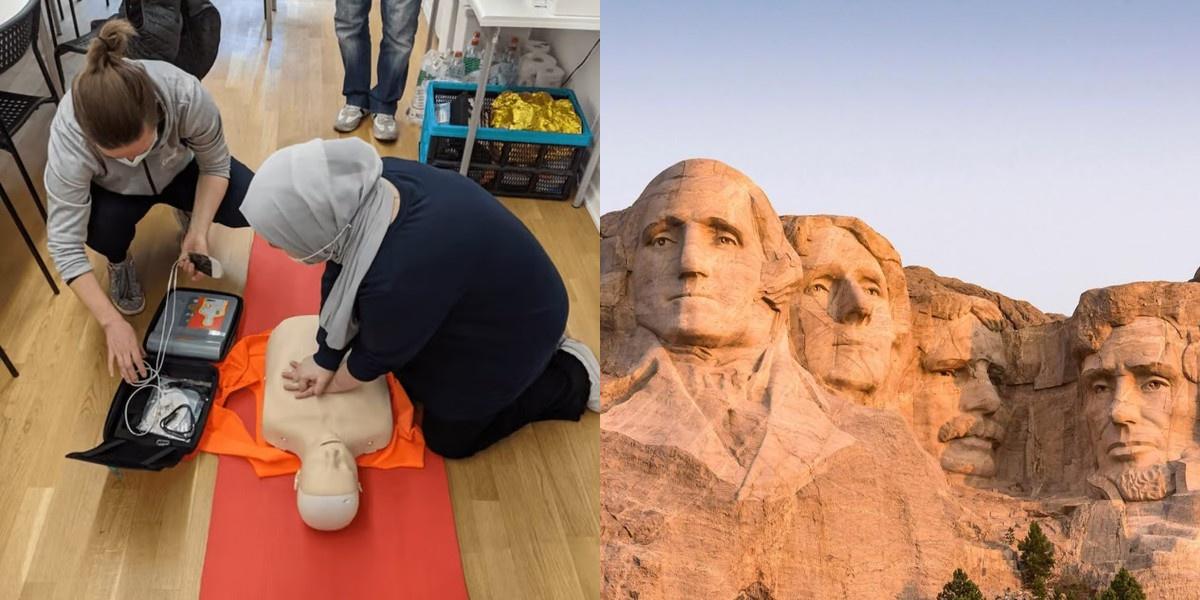What is a Paramedic?
A paramedic is a highly trained medical professional who provides advanced pre-hospital care to patients in emergency situations. They are often the first responders on the scene and play a crucial role in stabilizing and treating patients before they can be transported to a hospital.
Some of the responsibilities of a paramedic include:
- Assessing and evaluating a patient's condition
- Administering emergency medical treatments and medications
- Performing life-saving procedures such as CPR, intubation, and defibrillation
- Communicating with other healthcare professionals to coordinate patient care
- Providing emotional support to patients and their families during stressful situations
Where does a Paramedic work?
Paramedics can work in various settings, including:
- Emergency Medical Services (EMS) Agencies
- Ambulance Companies
- Fire Departments
- Hospitals
- Urgent Care Centers
- Air Medical Services
Paramedics may also have opportunities to work in specialized fields such as search and rescue, disaster response, or as part of a SWAT team.
How to Become a Paramedic in South Dakota?
To become a Paramedic in South Dakota, one must first complete an accredited Paramedic education program, typically a 1-2 year associate's degree. After successfully passing the National Registry of Emergency Medical Technicians (NREMT) exam, individuals can apply for a South Dakota Paramedic certification. With this credential, they can then search for Paramedic job opportunities in the state.
What are the requirements to become a Paramedic in South Dakota?
To become a paramedic in South Dakota, you must meet certain education and legal requirements. These include:
- High school diploma or GED equivalent
- Completion of an accredited paramedic training program
- Certification as a Nationally Registered Paramedic (NRP)
- Licensure as an Emergency Medical Technician-Paramedic (EMT-P) in South Dakota
In addition to these requirements, aspiring paramedics must also pass a background check and have a valid driver's license.
How do I get my Paramedic certification?
If you have a passion for helping others and thrive in high-pressure situations, a career as a paramedic may be the perfect fit for you. Paramedics play a crucial role in emergency medical services, providing immediate medical care to those in need. To become a certified paramedic, you will need to complete a series of steps, including education, training, and certification.
Here is a step-by-step guide on how to get your paramedic certification:
1. Ensure you meet the basic requirements: You must be at least 18 years old, have a high school diploma or GED, and possess a valid driver's license. These are the foundational prerequisites before you can start your paramedic journey.
2. Complete basic EMT training: Enroll in an Emergency Medical Technician (EMT) training program at a community college, technical school, or other accredited institution. This training includes both classroom instruction and hands-on practical experience, and you'll need to pass a certification exam to become a certified EMT.
3. Gain experience as an EMT: Work as an EMT to gain valuable real-world experience. This hands-on exposure to emergency medical situations will help you develop your skills and knowledge further, preparing you for advanced paramedic training.
4. Enroll in a paramedic program: Choose an accredited paramedic program offered by colleges, universities, or technical schools. These programs typically take 1-2 years to complete and include classroom lectures, lab work, and clinical rotations in hospitals or healthcare settings.
5. Complete clinical rotations and a field internship: During your paramedic program, you will participate in practical experiences under the supervision of experienced paramedics and healthcare professionals. This hands-on training is essential for building the skills and confidence needed to excel as a paramedic.
6. Prepare for and pass the National Registry Exam: After completing your paramedic program, study for the National Registry Exam, a standardized test that evaluates your knowledge and skills. The exam includes both written and practical components covering various topics, such as patient assessment and medical procedures.
7. Apply for state certification: Once you pass the National Registry Exam, apply for state certification. Check with your state's EMS agency for specific requirements and documentation needed. After receiving your state certification, you will be a certified paramedic and can begin seeking job opportunities.
How do I get a job as a Paramedic?
After obtaining your paramedic certification, the next step is to secure a job as a paramedic. The demand for paramedics is high, and there are various job opportunities available in both public and private sectors. Here are some steps to help you land a job as a paramedic:
1. Update your resume: Highlight your paramedic certification, education, and relevant experience. Include clinical rotations, field internships, or volunteer work, and emphasize specialized skills or certifications like advanced cardiac life support (ACLS) or pediatric advanced life support (PALS).
2. Begin your job search: Apply for paramedic positions in your area by checking job boards, online classifieds, and the websites of local hospitals, fire departments, and ambulance services. Networking can also help, so reach out to contacts in healthcare or emergency services.
3. Prepare for interviews: Research the organizations you’re interviewing with, understanding their mission, values, and services. Be ready to discuss your experience, skills, and ability to handle high-pressure situations. Practice answering common interview questions.
4. Highlight your skills during interviews: Talk about specific cases or experiences where you effectively provided care and managed emergencies. Emphasize your teamwork abilities and communication skills with patients, families, and other healthcare professionals.
5. Continue your education and professional development: After securing a job, stay updated with the latest advancements in paramedicine. Pursue advanced certifications or specialized training courses to enhance your skills and expand your career opportunities.
Career Paths and Opportunities after Becoming a Paramedic
Becoming a paramedic opens up a wide range of career paths and opportunities. While many paramedics work in traditional ambulance services, there are also opportunities in hospitals, fire departments, government agencies, and private companies. Here are some career paths you can consider after becoming a paramedic:
-
Emergency Medical Services (EMS): The most common career path for paramedics is to work in emergency medical services. This includes working for ambulance services, responding to 911 calls, and providing immediate medical care in emergency situations. Paramedics in EMS settings may also work alongside firefighters and other first responders.
-
Hospitals: Many hospitals employ paramedics in their emergency departments, where they provide critical care to patients in need. Paramedics in hospitals may work closely with physicians, nurses, and other healthcare professionals to stabilize patients, administer medications, and assist in medical procedures.
-
Fire Departments: Some paramedics choose to work for fire departments, where they serve as firefighters/paramedics. In addition to responding to medical emergencies, firefighters/paramedics also provide fire suppression, rescue services, and hazardous materials response. This career path offers the opportunity to work in a dynamic and diverse environment.
-
Flight Paramedic: For those seeking a more challenging and high-intensity career, becoming a flight paramedic may be a good fit. Flight paramedics work on medical helicopters or fixed-wing aircraft, providing critical care to patients during transport. This role requires advanced skills and knowledge, as well as the ability to work in high-stress environments.
-
Teaching and Education: With experience and advanced certifications, paramedics can also pursue careers in teaching and education. This may involve instructing future paramedics in paramedic programs, providing continuing education courses for practicing paramedics or developing educational materials and resources.
-
Management and Administration: Paramedics with strong leadership and organizational skills may choose to pursue management or administrative roles within the field. This can involve overseeing EMS operations, managing ambulance services, or working in healthcare administration.
Frequently Asked Questions





